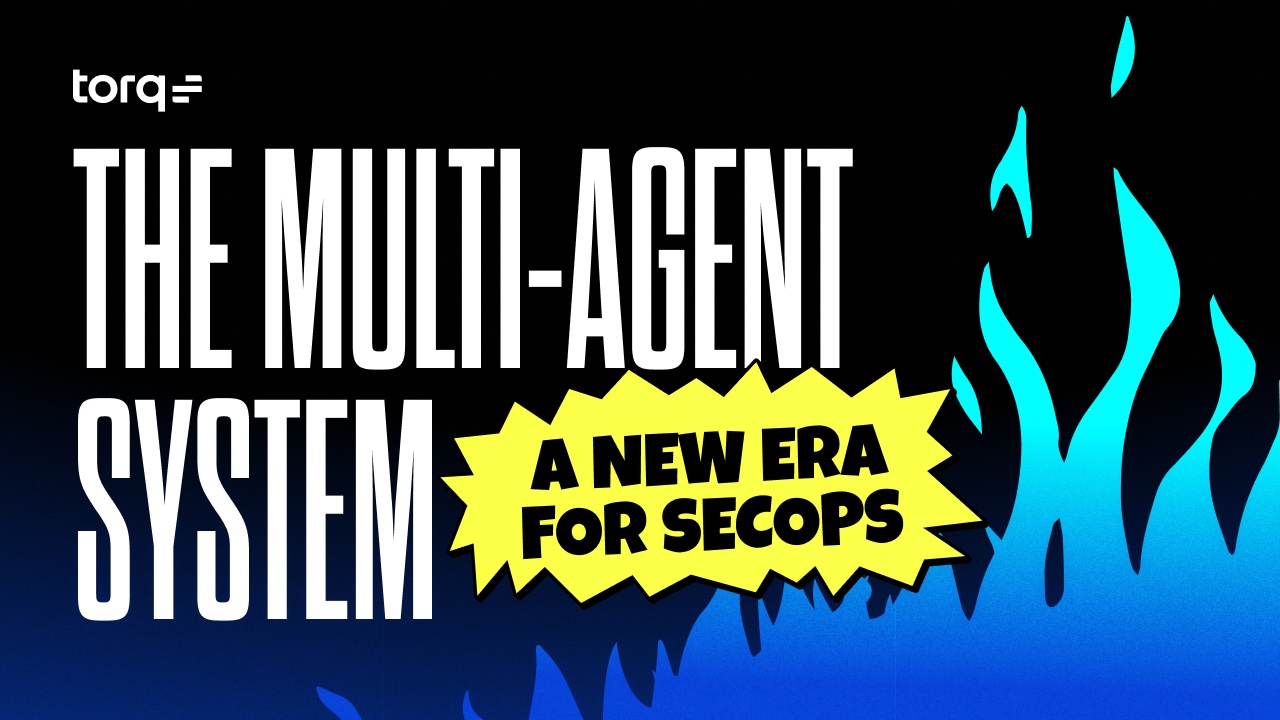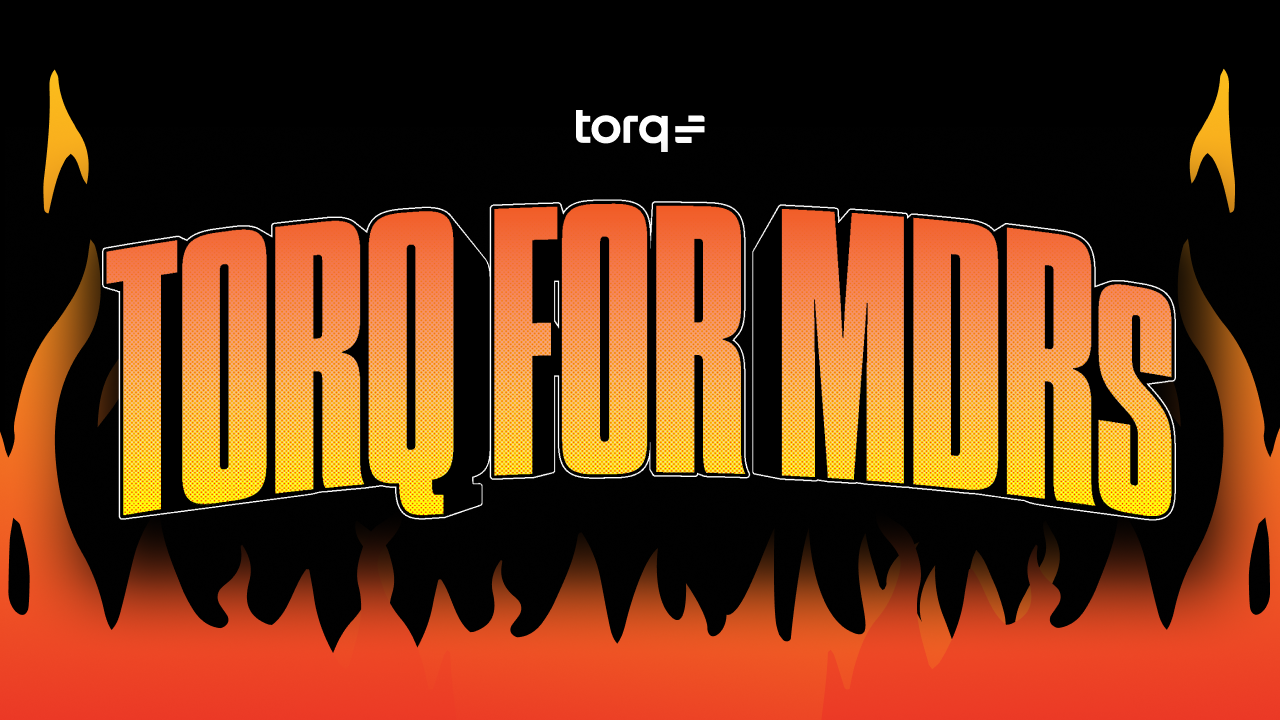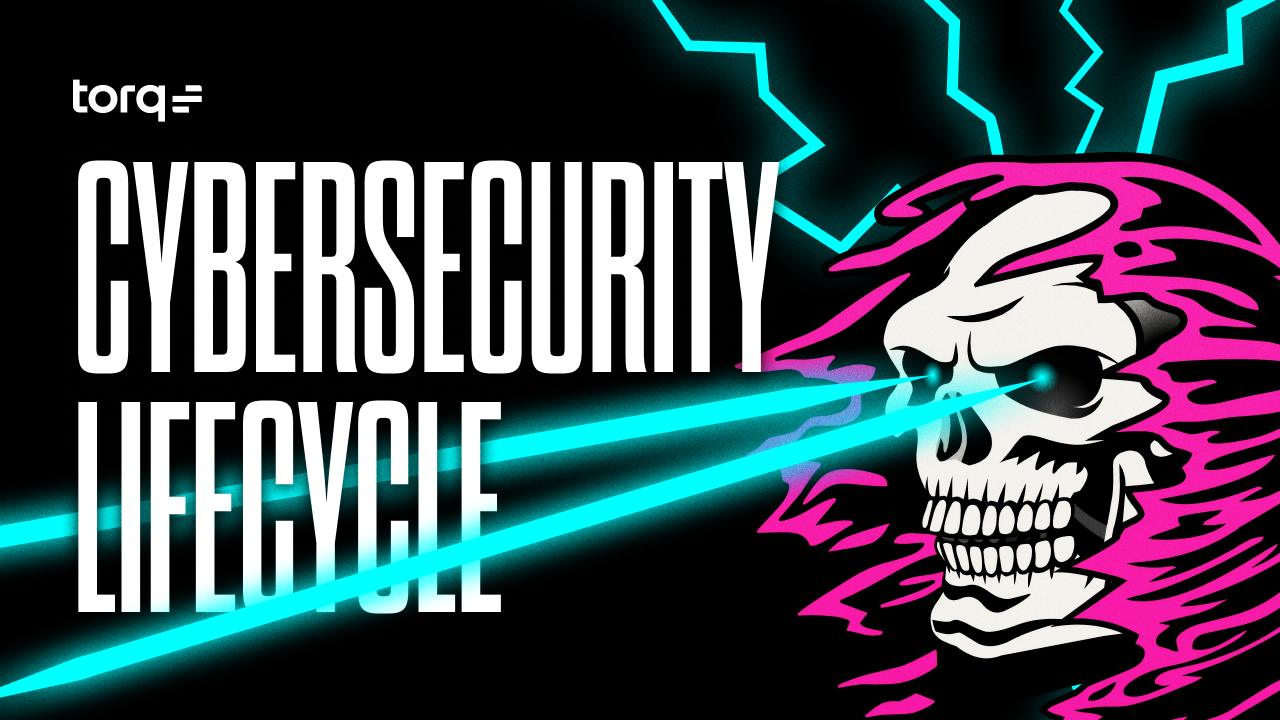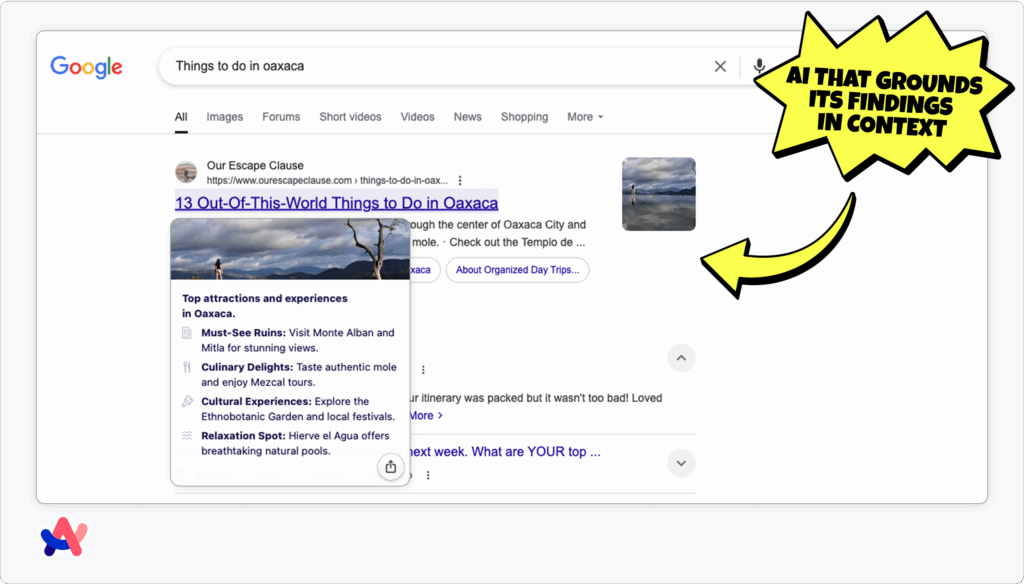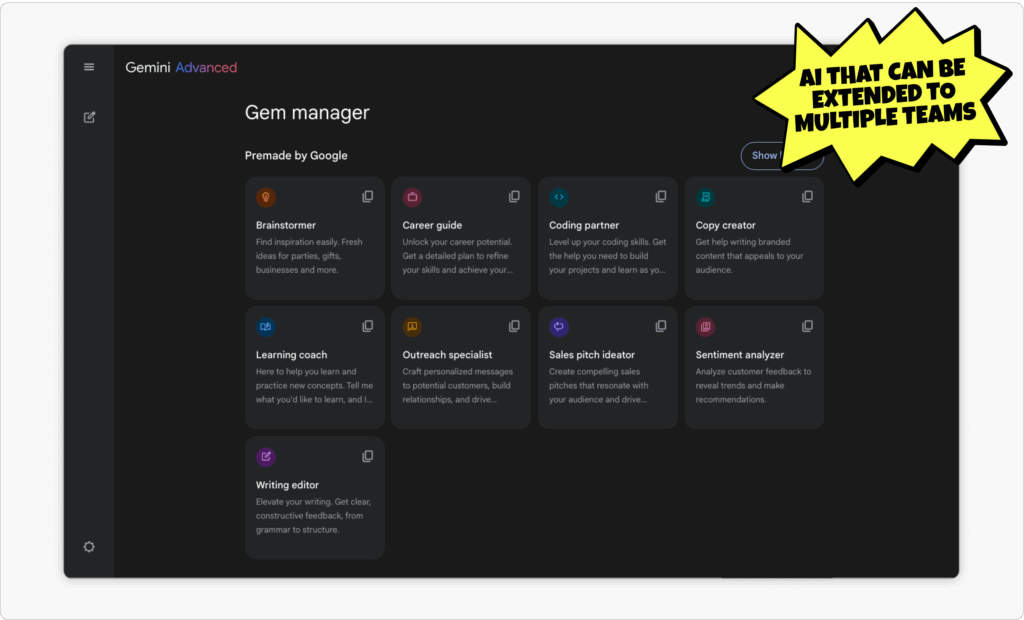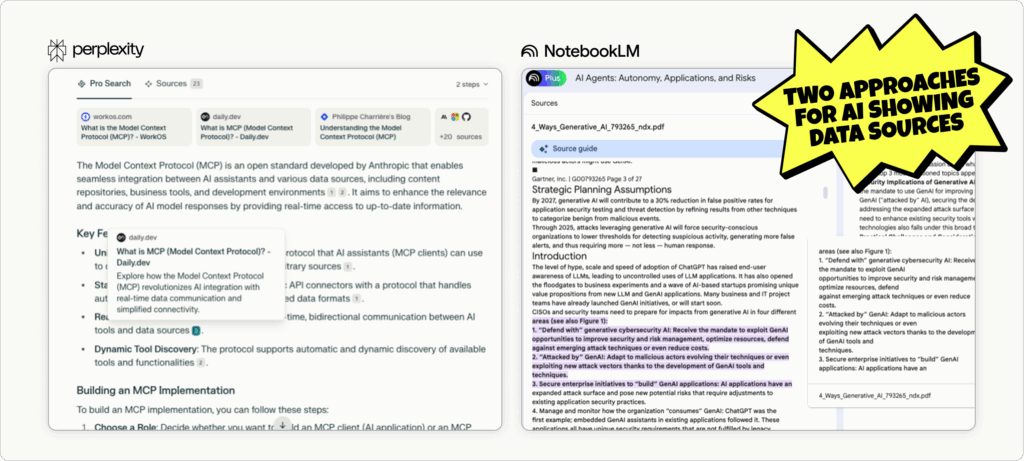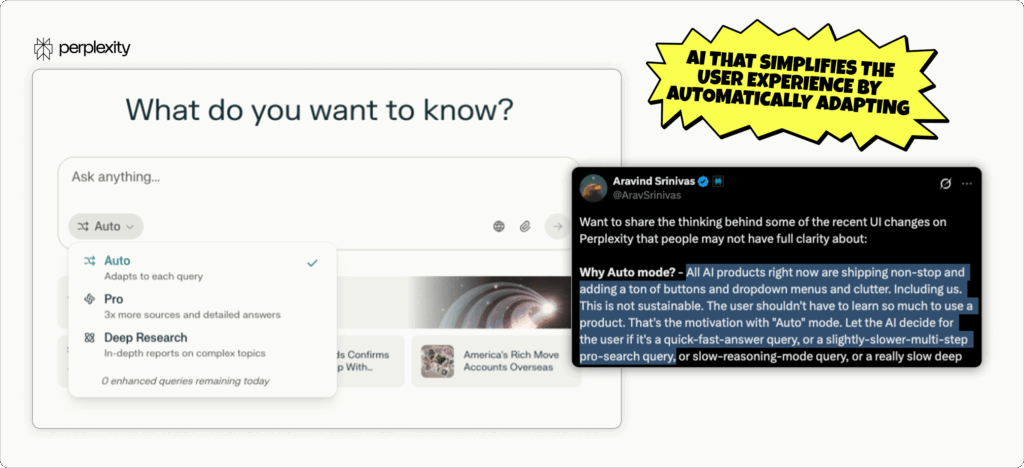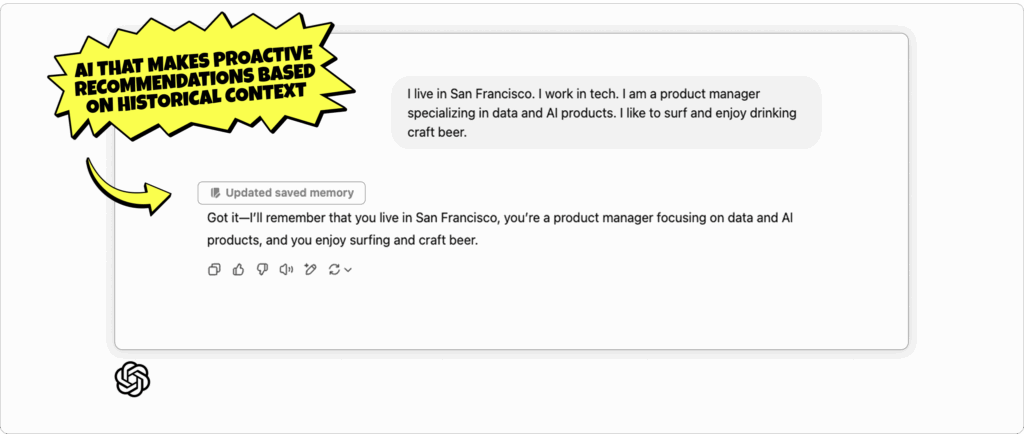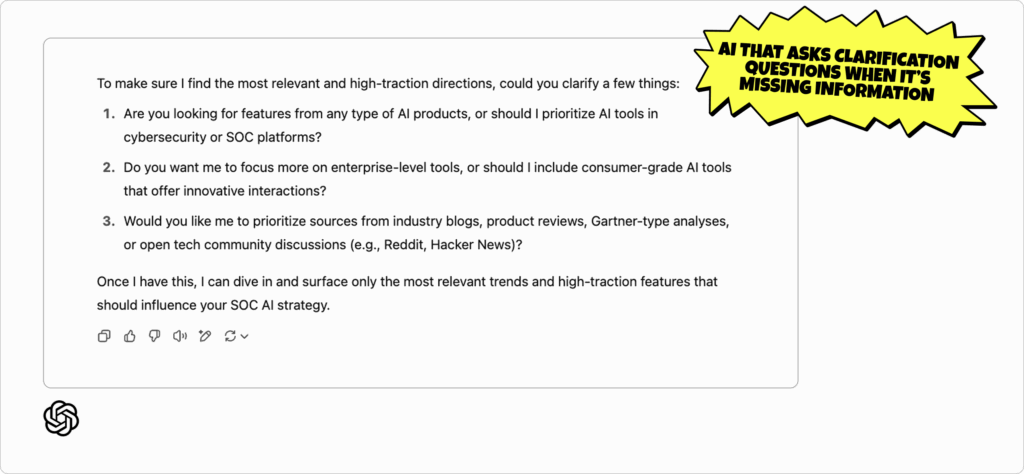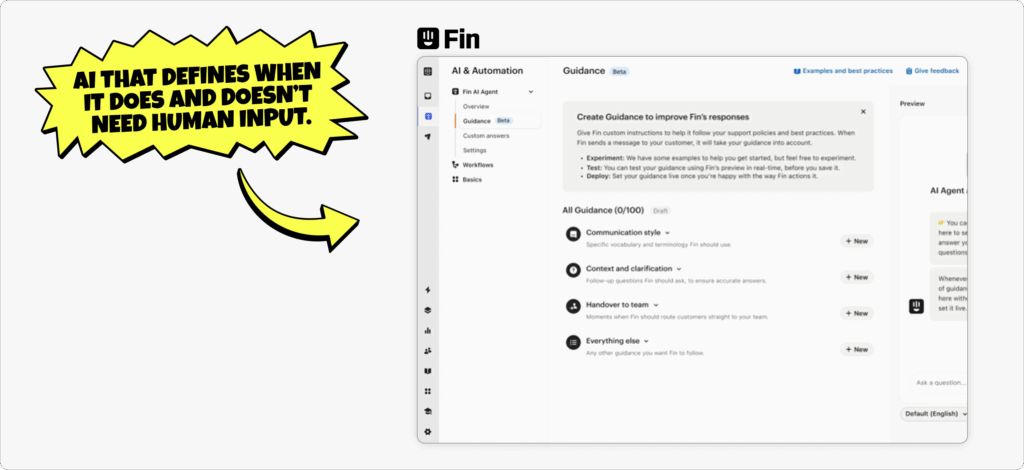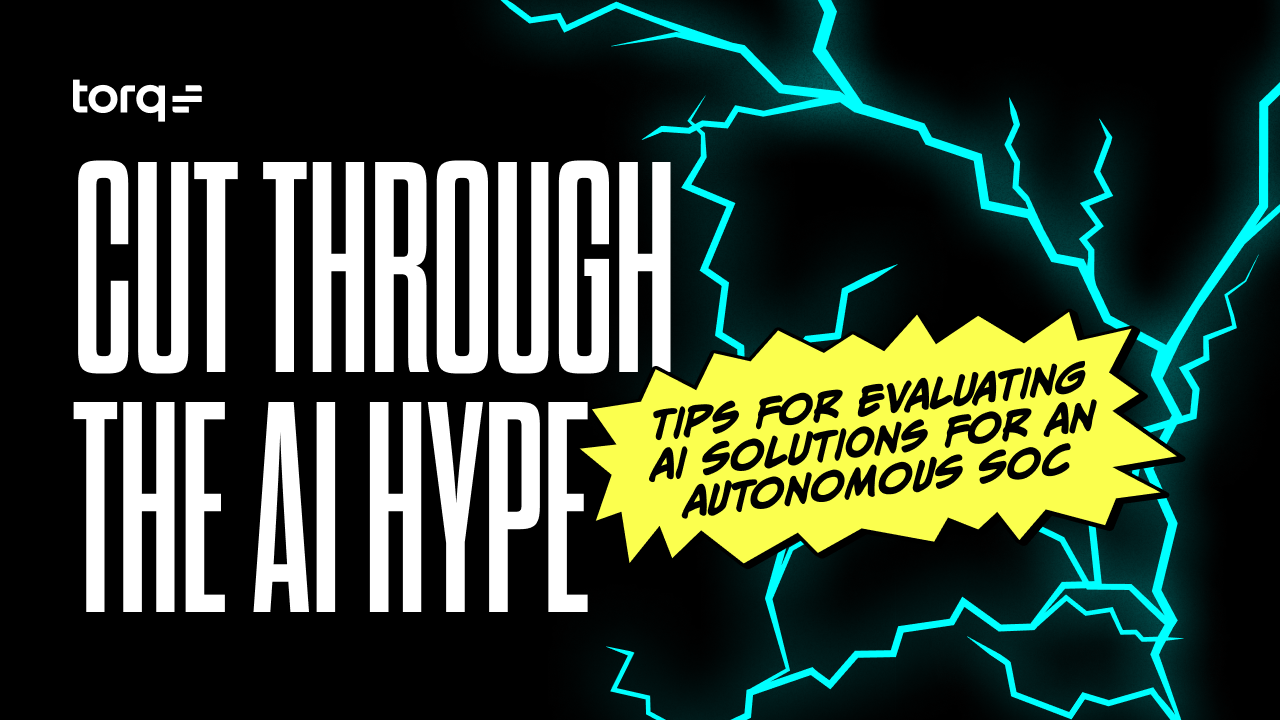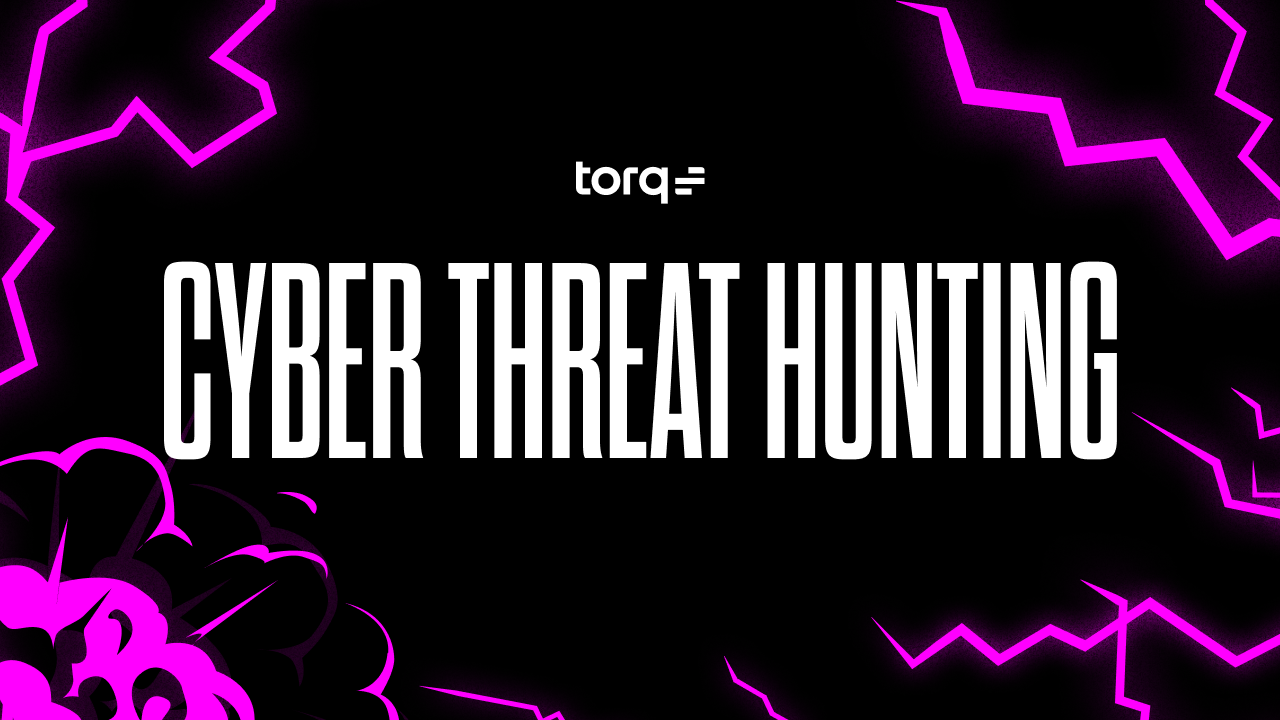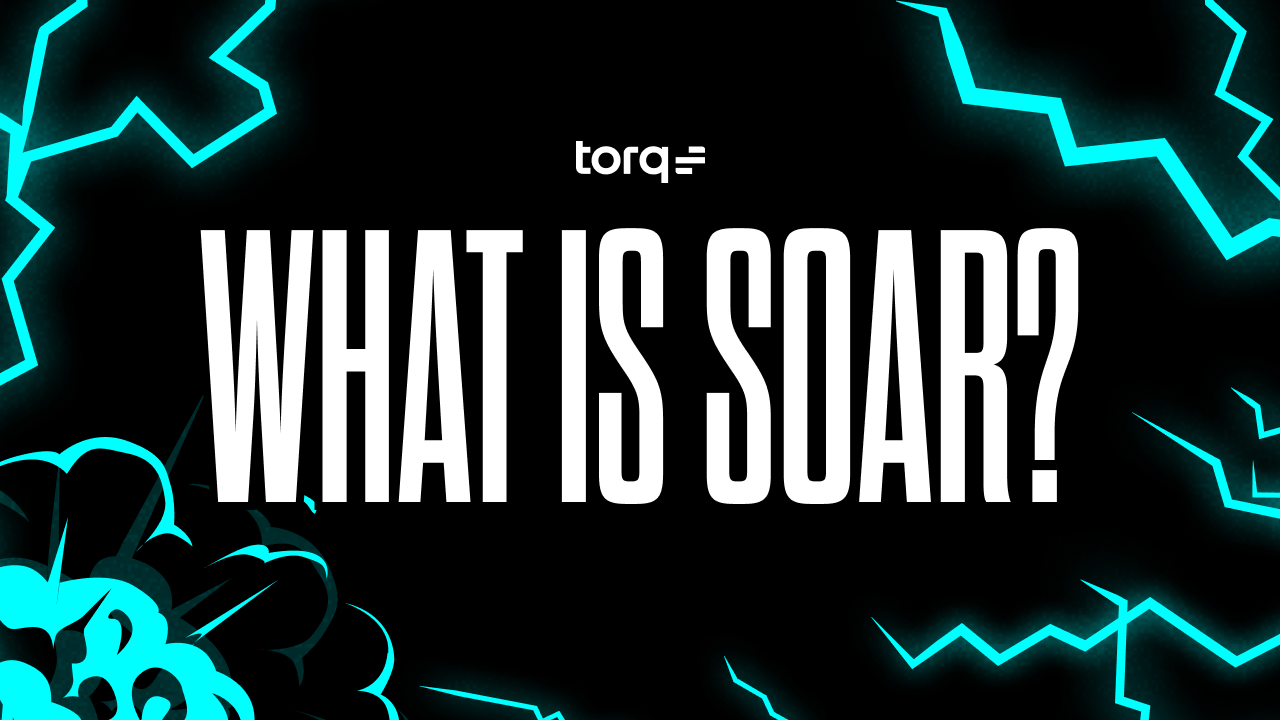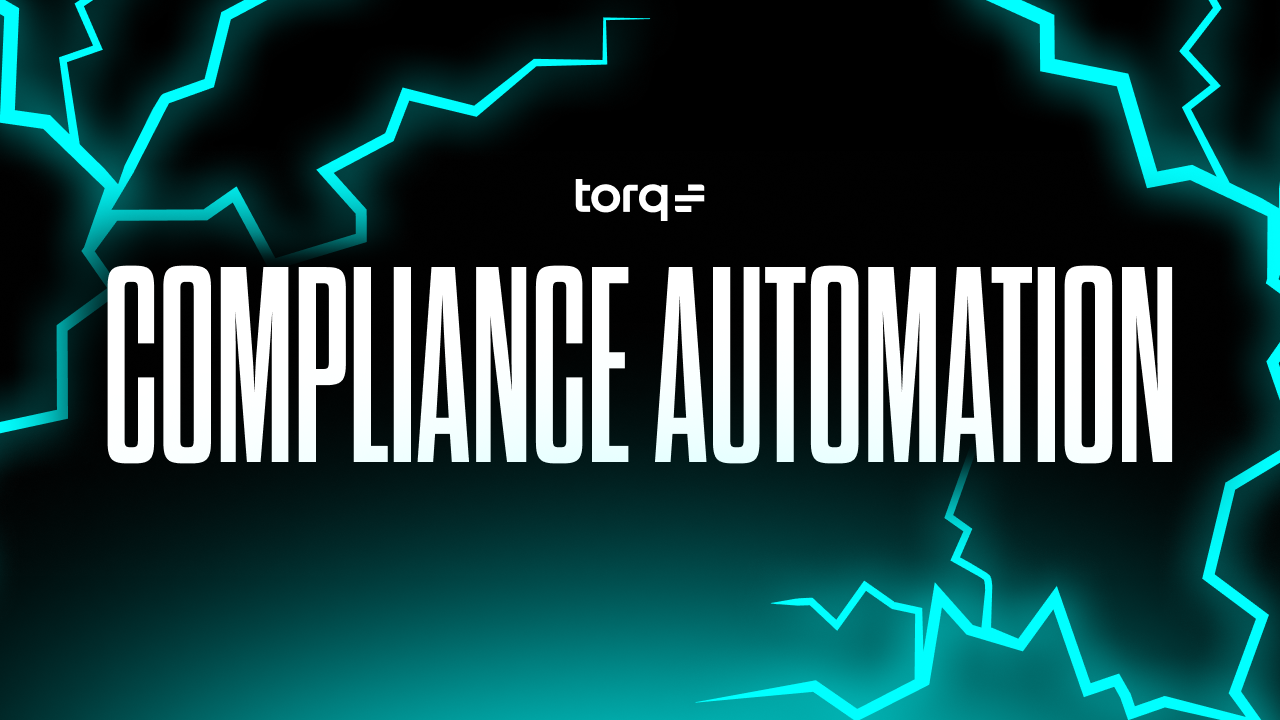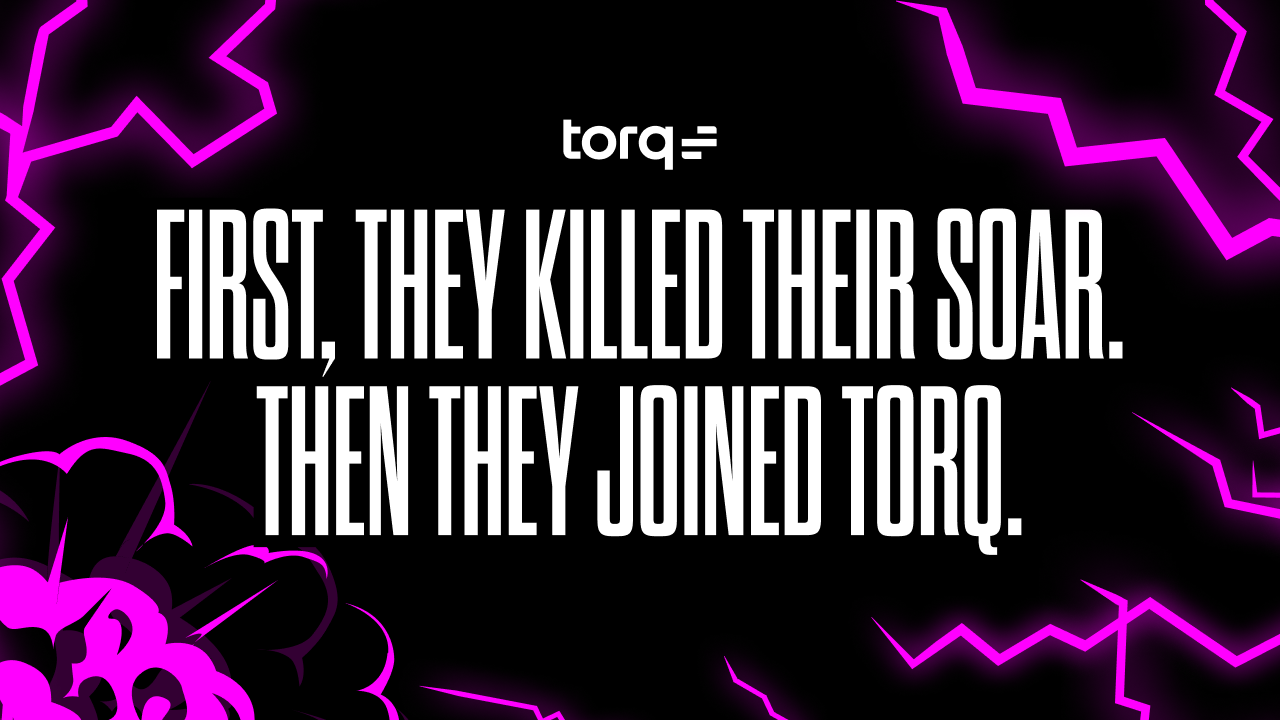Contents
Security teams face mounting pressure to defend against sophisticated cyber threats. Traditional automation strategies are often rigid, reactive, and lack the ability to scale effectively. Many SOCs already have access to generative AI to assist with simple tasks and now Torq has brought agentic AI into the mix — which thinks, acts, and learns autonomously to handle security risks. What’s next?
A multi-agent system (MAS) represents the next era for SecOps: specialized AI agents that work together to solve problems. Each AI agent has a specific role that it is responsible for executing, and together, this system of agents collaborates to achieve a common goal.
Let’s explore what a multi-agent system is, why it’s essential for SecOps, and how Torq leverages multi-agent AI to redefine security operations.
What Is a Multi-Agent System?
A multi-agent system is a network of artificially intelligent software agents working collaboratively to achieve complex, multi-step goals, often orchestrated by an OmniAgent, or “Super Agent”. Unlike monolithic automation tools, each agent within the system operates autonomously, specializing in specific tasks and communicating seamlessly to coordinate actions.
Multi-agent systems comprise three key components: the individual AI agents themselves, a communication framework, and a control structure that governs how agents interact. These smaller, focused agents that perform specific tasks break down complex security operations into manageable pieces.
Multi-Agent System Defined
A multi-agent system (MAS) is a team of independent AI agents that work collaboratively to complete multi-step tasks or solve complex problems. Each agent in a MAS operates autonomously, specializes in a specific function, and communicates with other agents to coordinate actions, often orchestrated by an OmniAgent or “Super Agent.”
Unlike traditional automation, which follows rigid, sequential processes, multi-agent AI systems enable parallel task execution, dynamic adaptation, and intelligent decision-making. In SecOps, MAS technology enables teams to scale, automate, and respond to threats significantly faster and more efficiently.
Why Multi-Agent AI Outperforms Single AI Agents
Scalable: A MAS enables multiple agents to work simultaneously across tasks — unlike traditional automation that handles events sequentially. This parallel approach dramatically increases operational speed and resilience.
Specialization: Rather than relying on broad workflows, multi-agent AI deploys specialized agents that are experts in their roles. This ensures every security incident receives expert-level attention explicitly tailored to its context.
Collaborative Learning: Multi-agent systems leverage AI reasoning to improve continuously. They learn from incidents, adapt to changing threats, and refine their workflows automatically, enabling ongoing evolution and enhanced security posture.
Cost Savings: By breaking down responsibilities into smaller specialized tasks, the workload and resource consumption of the AI system is more efficiently distributed, resulting in a less costly AI implementation. Rather than a single general-purpose AI chatbot working step by step through a problem, the parallel execution of bite-sized tasks helps save the SOC money in the long run.
How Do Multi-Agent AI Systems Work in the SOC?
In a MAS, each agent operates independently, making its own decisions based on its specific role, environment inputs, and communication with other agents.
Here’s how a typical multi-agent system operates:
- Autonomy: Each agent can act independently without needing centralized control.
- Specialization: Agents are assigned specific functions (e.g. triage, investigation, remediation, etc.) based on their unique capabilities and expertise.
- Communication and coordination: Agents share information, either directly or through a central, orchestrating OmniAgent, to align activities, correlate relevant data, and avoid conflicts.
- Parallel execution: Multiple agents work simultaneously, dramatically accelerating task completion compared to linear automation models.
- Adaptability: Agents dynamically adjust their behavior in response to real-time inputs, changes in the threat landscape, or evolving priorities.
- Emergent behavior: Through collaboration, the system can achieve more sophisticated outcomes than any single agent.
Multi-Agent System Use Cases In the SOC
Alert Triage at Scale
With a Multi-Agent System, autonomous agents can instantly evaluate thousands of incoming alerts, enrich them with context, and determine severity using internal telemetry and threat intel sources. Instead of drowning analysts in false positives, MAS filters out noise and flags what actually matters. This dramatically reduces Mean Time to Remediate (MTTR) and frees up security teams to focus on high-value investigations.
Runbook Orchestration
Building and maintaining runbooks shouldn’t require a dev team. Multi-agent systems enable no-code orchestration of complex workflows that span cloud platforms, identity providers, SIEMs, EDRs, and more. Security teams can define desired outcomes in natural language, and AI agents translate those into structured, executable playbooks. This accelerates time-to-value, eliminates human error, and ensures consistent, repeatable outcomes without code dependencies.
Incident Response
A Multi-Agent System coordinates the investigation, containment, remediation, and closure of a case as a single, seamless operation. Each agent specializes in a specific role for triage, root cause analysis, identity verification, and remediation, working in parallel under the direction of an OmniAgent. Threats are resolved faster, response is consistent, and your SOC operates like a finely-tuned machine.
Threat Hunting
Proactive threat-hunting agents continuously monitor activity across your environment, looking for behavioral anomalies, pattern deviations, or signals buried in noise. These agents correlate telemetry from endpoints, cloud assets, and user behavior to surface suspicious activity. They initiate investigations automatically, escalating only when human insight is required.
The World’s First Multi-Agent System for The SOC
Torq is the first cybersecurity platform to launch a true Multi-Agent System (MAS) purpose-built for the SOC. Torq HyperSOC™’s MAS architecture deploys a team of specialized, autonomous AI Agents, coordinated by Socrates, our OmniAgent, to execute complex SecOps workflows in parallel, at scale, and without human intervention. Meet Torq’s AI Agents.
Socrates, the AI SOC Analyst
Socrates is the OmniAgent mastermind that serves as the command center for all other agents. It interprets high-level goals and directives and then orchestrates the appropriate sequence of AI Agents to execute the task with precision. Socrates understands natural language, so human SOC analysts can kick off complex investigations or remediation plans with simple prompts. It turns strategic intent into scalable, autonomous action.
Runbook Agent
The Runbook Agent is the architect of execution. It takes strategic objectives, like responding to phishing, escalating ransomware alerts, or handling IAM requests, and maps them to dynamic, modular workflows. This agent builds the execution plan, delegates tasks to specialized agents, and ensures every step adheres to security policy and best practices. It enables your SOC to execute with precision, speed, and zero guesswork.
Investigation Agent
When context is critical, the Investigation Agent takes over. It digs deep into alert data, pulling from internal logs, threat intelligence platforms, CMDBs, and identity systems to uncover the root cause of a threat. It correlates signals, identifies attack paths, and enriches cases with detailed findings. This agent handles the heavy lifting, allowing human analysts to focus on informed decision-making.
Remediation Agent
Once a threat is validated, the Remediationgent initiates the full response lifecycle, from isolating endpoints and revoking credentials to updating firewall rules and notifying affected users. It acts decisively and autonomously to contain incidents and restore normal operations without waiting for human intervention.
Case Management Agent
The Case Management Agent automatically compiles case summaries, prioritizes incidents based on business impact and severity, and routes alerts to the right stakeholders. It also captures analyst actions and decisions to maintain clean audit trails and feed the system’s memory for more intelligent responses over time. This agent transforms raw alerts into structured, actionable intelligence.
In Torq HyperSOC™,, each AI Agent specializes in a core security function — and together, they operate as an intelligent, coordinated, tireless SOC workforce. This collaborative multi-agent AI architecture eliminates bottlenecks, accelerates response, and drives precision at scale, transforming reactive SOCs into proactive, autonomous security operations.
The Future of SecOps: The Autonomous SOC Powered by Multi-Agent AI
The security industry has outgrown one-size-fits-all automation. Torq’s Multi-Agent System offers a new path forward: agentic AI that works in tandem, orchestrated by Socrates, to transform your SOC from reactive to autonomous. But Torq’s latest advancements truly push our MAS into next-gen territory.
Retrieval-augmented generation (RAG) enhances Torq’s MAS by giving our AI Agents access to private and external knowledge bases. That means every decision is made with the most current, relevant intelligence. RAG enhances everything from case enrichment and threat correlation to report generation, enabling smarter, faster response without sacrificing accuracy.
Model-Context Protocol (MCP) is another Torq game-changer. Torq is the first autonomous SOC platform to natively support MCP, which guarantees AI decisions are grounded in the exact context of your environment. This ensures precise, verifiable actions based on your organization’s specific infrastructure, data, and threat landscape.
Together, these advancements bring Torq’s vision to life: a truly autonomous SOC where AI handles the heavy lifting and humans stay in control as strategic decision-makers.
See the world’s first true Multi-Agent System for the SOC in action.
Quiz: Which Torq AI SOC Agent Has Your Back?
Still chasing alerts manually? That’s what a multi-agent system is for.
Take this quiz to discover which AI agent in Torq HyperSOC™ is taking the tactical weight off your plate — so you can focus on what really matters.
-
A zero-day exploit just triggered an alert. What’s your move?
-
Your SOC team relies on you to...
-
When faced with numerous alerts, you:
-
Pick the quote that best sums up how you feel:

